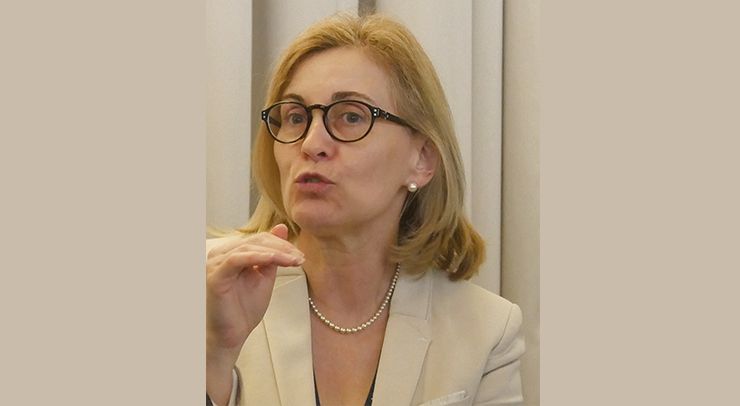Pragmatism at its best

Valérie Guénon graduated from UTC in mechanical engineering (Materials and Technological Innovation) in 1986, and has spent her entire career with Safran. She is currently Director of Safran’s Product Environmental Policy. Interactions has singled out a lady whose footsteps reflect a highly pragmatic career.
Why do you invoke pragmatism ? “Because I needed some at one point. I was a good student and I could have done a Bac C¹ at the time, but I followed the Lycee’s D stream out of interest in the natural sciences. But this choice closed the door for me to the classic “prepas” at engineering schools,” recalls Valérie Guénon.
And your choice to go for UTC ? “It has imposed itself very quickly, because it trains engineers with an integrated preparatory course, recruits future students on the basis of a dossier, including those with a Bac D, and offers a biological engineering branch. Another particularity that appealed to me: during the interview, recruiters were not only interested in the grades but also in my person,” she adds. However, I got a “slap in the face” in the first semester of the year by failing the two main UVs. But this in no way diminished my determination, as I was not allowed to do so. From that point on I didn’t fail any more and I even finished among the best in the class,” she says. At the end of the core curriculum, pragmatics takes over again: she chose the Bio-Engineering branch rather than Mechanical Engineering. For what reason?” It was when I learned that all students at the time finding work within three months of graduation, except for the girls in the Biological Engineering branch, which I changed my mind,” she adds.
A choice that she does not regret at all and which allowed her to make a choice that was rather rare in the 1980s, to carry out two long internships abroad. “In my 4th year, I did a first six-month internship in the Netherlands. And in the 5th year, with all my UVs validated in the first semester, the UTC offered me the opportunity to do a master’s degree which, in the United States, takes two years. I left for two years at the University of Delaware in their Mechanical and Aerospace Engineering department, combining the last year of my engineering studies with the first year of my Master’s degree”, stresses Valérie. Guénon.
In 1988, on her return from the United States where she turned down a job offer at Dupont de Nemours, and with her double degree in her pocket, she was offered three jobs: one at Renault, the other at the GIAT — renamed Nexter in 2006 – and finally at Snecma. She chose the latter which, following the 2005 merger with Sagem, became Safran. Specialising in composite materials, Valérie Guénon initially held various technical positions there. Then, after becoming Head of European research programmes for the Safran Group, she took part in the creation of the Clean Sky² programme launched in 2008. In 2009, she became Quality Director at Safran Landing Systems, then Director of institutional affairs for the Group’s research and technology, and finally Head of Safran University before taking over as Head of environmental policy.
Her role as Director of the Product Environmental Policy of Europe’s leading aeronautical equipment manufacturer? “On the one hand, this involves representing the Group vis-à-vis the international institutions which establish regulations relating to the environmental footprint of aviation, such as the International Civil Aviation Organization (ICAO), an international body that is an independent body of the UN), but also European and international institutions. And, on the other hand, to coordinate the group’s actions in this area, whether technical or communication-related. The latter being of crucial importance at a time where the environmental footprint is in the spotlight”, explains Valérie Guénon.
In addition to this major role, there is a second one: the definition of an environmental strategy for the design of future products. “We are facing a major challenge: that of reducing the environmental and climatic footprint of aviation and anticipating the tightening of future international environmental standards, especially as our products are designed to last for decades. We must therefore not be mistaken about their performance in general and that of the environment in particular,” she adds.
¹ Bac S: specialization in maths and/or physics




